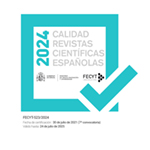El empleo de fotogrametría mediante vehículos aéreos no tripulados (VANT/dron) como herramienta de evaluación del patrimonio en riesgo: chinampas arqueológicas de Xochimilco
Resumen
El desarrollo de la tecnología de vehículos aéreos no tripulados (VANT, dron) en la última década ha sido vertiginoso. Su empleo en el estudio del patrimonio cultural es creciente y en este estudio exponemos un flujo de trabajo empleando un sistema automatizado de registro por fotografía aérea mediante el uso de un dispositivo que integra un hexacóptero al que se le han adaptado dos cámaras fotográficas, una de ellas para obtener imágenes de luz visible (VIS) y otra modificada para captar el infrarrojo. Hemos tomado como estudio de caso un sitio chinampero en Xochimilco (El Japón) para evaluar su utilidad en el registro y reconocimiento de rasgos enterrados a escasa profundidad. Mediante el procesamiento fotogramétrico de los estereopares se generó el modelo digital de elevación para registra una topografía de alta resolución similar a la obtenida mediante un LIDAR, así como otras una imágenes en composición de falso color para la creación de mapas de índice de vegetación diferencial normalizada (NDVI) que permiten resaltar rasgos arqueológicos con base en diferencias del crecimiento y vigor de la vegetación.Descargas
Descarga artículo
Licencia
La Revista Española de Antropología Americana, para fomentar el intercambio global del conocimiento, facilita el acceso sin restricciones a sus contenidos desde el momento de su publicación en la presente edición electrónica, y por eso es una revista de acceso abierto. Los originales publicados en esta revista son propiedad de la Universidad Complutense de Madrid y es obligatorio citar su procedencia en cualquier reproducción total o parcial. Todos los contenidos se distribuyen bajo una licencia de uso y distribución Creative Commons Reconocimiento 4.0 (CC BY 4.0). Esta circunstancia ha de hacerse constar expresamente de esta forma cuando sea necesario. Puede consultar la versión informativa y el texto legal de la licencia.









